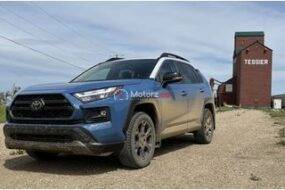In today’s digital age, technology has seeped into every aspect of our lives, including our vehicles. With the increasing integration of computers and networks into cars, the risk of cyberattacks has also risen. Automotive cybersecurity is the practice of protecting vehicles from malicious attacks that could compromise their safety, functionality, or even ownership.
The Growing Threat of Automotive Cyberattacks
The automotive industry has witnessed a significant surge in the number and sophistication of cyberattacks. Hackers can exploit vulnerabilities in vehicle systems to gain unauthorized access, manipulate vehicle functions, or even steal personal information. Some potential consequences of automotive cyberattacks include:
Remote vehicle control: Hackers could remotely take control of a vehicle’s steering, brakes, or acceleration, posing a serious threat to driver and passenger safety.
Data theft: Sensitive information such as GPS location, driving habits, and personal details can be stolen and misused.
Denial of service: Hackers could disrupt vehicle functions, such as locking doors or preventing the engine from starting.
Vehicle hijacking: In extreme cases, hackers could gain complete control of a vehicle, allowing them to drive it remotely.
Understanding Automotive Cybersecurity Vulnerabilities
To effectively protect vehicles from cyberattacks, it is essential to understand the potential vulnerabilities that can be exploited. Some common vulnerabilities include:
Wireless connectivity: Bluetooth, Wi-Fi, and cellular networks can provide entry points for hackers.
Vehicle-to-infrastructure (V2I) communication: The exchange of data between vehicles and infrastructure can be vulnerable to attacks.
Over-the-air (OTA) updates: Software updates can introduce vulnerabilities if not properly secured.
Third-party components: Components sourced from external suppliers may have security weaknesses.
Best Practices for Automotive Cybersecurity
To mitigate the risks of automotive cyberattacks, it is crucial to implement robust cybersecurity measures. Here are some best practices:
Regular software updates: Keep vehicle software up-to-date to address known vulnerabilities.
Secure wireless connections: Use strong passwords and encryption for wireless connections.
Limit data sharing: Be cautious about sharing personal information or vehicle data with third-party apps or services.
Avoid public Wi-Fi networks: Connecting to public Wi-Fi networks can expose your vehicle to security risks.
Use reputable service providers: Ensure that any service providers involved in vehicle maintenance or software updates have strong cybersecurity practices.
Educate yourself: Stay informed about the latest automotive cybersecurity threats and best practices.
The Role of Manufacturers and Regulators
Automotive manufacturers and regulators play a crucial role in ensuring the security of vehicles. Manufacturers should invest in research and development to develop secure vehicle systems and implement robust cybersecurity measures. Regulators can establish standards and guidelines to ensure that vehicles meet minimum security requirements.
Automotive cybersecurity is a complex issue that requires a multifaceted approach. By understanding the risks, implementing best practices, and working together, we can protect our vehicles from the growing threat of cyberattacks. As technology continues to advance, it is essential to remain vigilant and proactive in safeguarding the security of our cars.
As technology continues to evolve, so too will the threats to automotive cybersecurity. New vulnerabilities will emerge, and attackers will develop more sophisticated techniques. To stay ahead of these challenges, the following trends and developments are likely to shape the future of automotive cybersecurity:
Artificial intelligence (AI): AI can be used to detect and prevent cyberattacks by analyzing vehicle data for anomalies and suspicious patterns.
Blockchain technology: Blockchain can provide a secure and tamper-proof way to store and share vehicle data.
Quantum computing: Quantum computers have the potential to break current encryption methods, making it necessary to develop new security protocols.
Regulatory frameworks: Governments and international organizations are likely to develop more stringent regulations to address the growing threat of automotive cyberattacks.
Conclusion
Automotive cybersecurity is a critical issue that will continue to be a major focus in the years to come. By understanding the risks, implementing best practices, and staying informed about emerging threats, we can protect our vehicles and ensure a safer future for all drivers.





